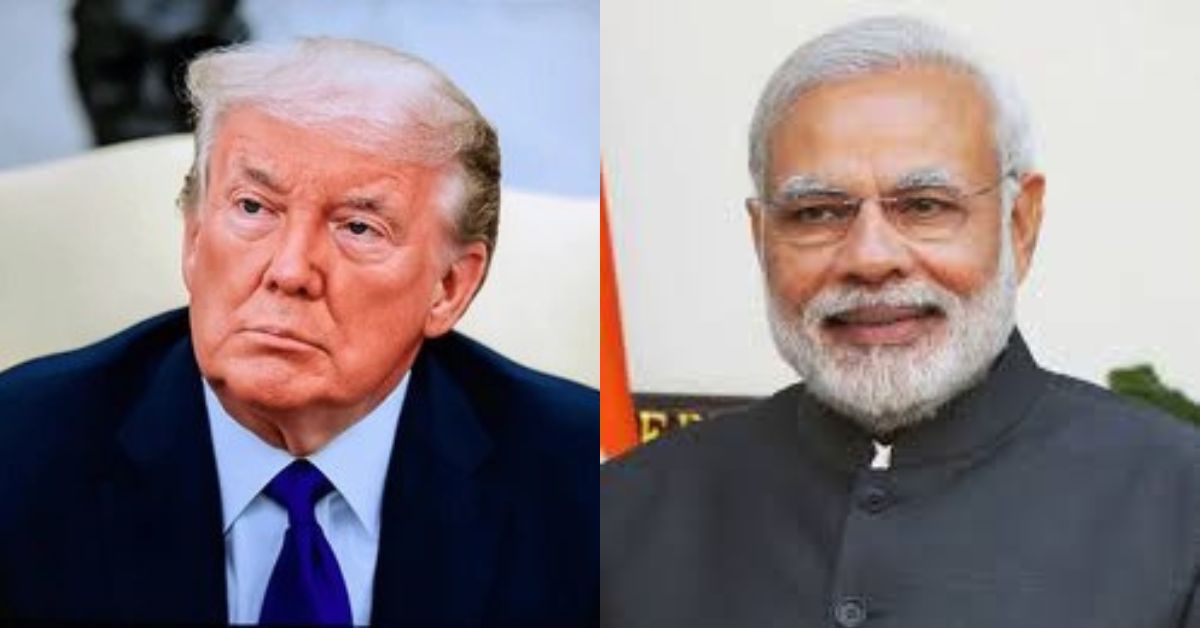On August 6, 2025, U.S. President Donald Trump signed an executive order imposing an additional 25% tariff on goods imported from India, bringing the total tariff rate to 50%. The decision, which comes on top of a previously announced 25% tariff, is a response to India’s continued purchase of Russian oil amid the ongoing Russia-Ukraine conflict. Trump described the move as a significant economic blow to Moscow, arguing that India’s oil imports fuel Russia’s war efforts. This article examines the details of the tariffs, their geopolitical context, India’s response, and the broader implications for U.S.-India trade relations.
Background of the Tariff Decision
The new tariffs stem from Trump’s broader strategy to pressure countries trading with Russia as part of his efforts to push for a resolution to the Russia-Ukraine war, now in its fourth year. India, a major importer of Russian oil, has been a focal point of this policy. According to Reuters, India imported approximately 1.75 million barrels per day of Russian oil in the first half of 2025, making Russia its top oil supplier, accounting for 35% of India’s oil imports. This trade has grown significantly since Western sanctions in 2022 made Russian oil available at discounted rates.
Trump’s executive order, signed on August 6, 2025, cites India’s oil purchases as enabling Russia’s economy and, by extension, its military actions in Ukraine. The order, titled “Addressing Threats to the United States by the Government of the Russian Federation,” invokes national security concerns, claiming that Russia’s actions pose an “unusual and extraordinary threat” to U.S. interests. The additional 25% tariff, effective August 27, 2025, follows an initial 25% tariff set to take effect on August 7, doubling the total duty on most Indian goods.
Details of the Executive Order
The executive order outlines several key points regarding the tariffs:
- Scope of Tariffs: The additional 25% duty applies to most Indian imports, excluding specific goods like steel, aluminum, and pharmaceuticals, as noted by The Economic Times. Goods already in transit before August 27 are exempt.
- Legal Basis: The order references U.S. laws restricting Russian imports due to the Ukraine conflict, including Executive Order 14066, which addresses the national emergency declared over Russia’s actions.
- Future Actions: The order directs the Secretary of Commerce, in coordination with other officials, to monitor other countries’ Russian oil imports and recommend additional tariffs if necessary.
- Definition of Russian Oil: The term includes crude oil or petroleum products extracted, refined, or exported from Russia, regardless of the entity involved, and covers indirect imports through intermediaries.
Trump emphasized that the tariffs aim to deter countries from supporting Russia’s economy, stating on CNBC’s Squawk Box that India’s oil purchases are “fueling the war machine.” He also accused India of reselling Russian oil on the global market for profit, a claim echoed in posts on X.
India’s Response to the Tariffs
india’s Ministry of External Affairs issued a sharp rebuttal, calling the tariffs “unfair, unjustified, and unreasonable.” The ministry highlighted that the U.S. and European Union continue to import Russian goods, such as uranium and fertilizers, despite criticizing India’s oil purchases. “Unlike our case, such trade is not even a vital national compulsion,” the ministry stated, emphasizing India’s need to ensure energy security for its 1.4 billion people.
According to sources cited by News18, Indian companies plan to continue importing Russian oil despite the tariffs, prioritizing energy needs. The ministry also noted that India’s economy, the world’s fastest-growing major economy, relies on affordable oil to sustain growth. India has maintained that its oil imports are driven by market factors, not political motives, and has not supported Western sanctions on Russia.
Geopolitical Context and U.S.-India Relations
The tariffs mark a significant escalation in U.S.-India trade tensions, described by USA Today as the most serious crisis in bilateral relations in years. The U.S. is India’s largest export market, with bilateral trade valued at nearly $128 billion in 2024, according to the U.S. Trade Representative. The U.S. ran a $45.8 billion trade deficit with India last year, a 5.9% increase from 2023, which Trump has frequently cited as evidence of unfair trade practices.
Trump’s frustration with India extends beyond oil imports. He has long criticized India’s high tariffs on U.S. goods, such as 70% on passenger vehicles and 50% on rice, calling them “the most strenuous and obnoxious non-monetary trade barriers of any country.” Efforts to negotiate a trade deal with India, led by Indian Prime Minister Narendra Modi, have stalled, with Reuters reporting a “mix of political misjudgment, missed signals, and bitterness” as contributing factors.
The tariffs also coincide with diplomatic efforts to resolve the Russia-Ukraine conflict. On August 6, Trump’s special envoy, Steve Witkoff, met with Russian President Vladimir Putin in Moscow to discuss a potential ceasefire, a meeting Trump described as “highly productive.” However, with no clear progress toward peace, the administration has proceeded with its tariff strategy.
Economic Implications for India and the U.S.
The 50% tariff rate, among the highest imposed on any U.S. trading partner, could significantly impact Indian exports, particularly in sectors like aluminum and iron and steel, which were valued at $946 million and $2.8 billion, respectively, in FY2024. Economists warn that the tariffs may lead to higher costs for U.S. consumers and businesses, potentially slowing economic growth and increasing inflation.
India, a key geopolitical counterbalance to China, has maintained close ties with Russia, with bilateral trade reaching $68.7 billion in FY2024-25, largely driven by oil imports. The Indian government has vowed to take “all necessary measures” to protect its economic interests, signaling potential retaliatory actions.
Russia’s Reaction and Global Perspective
Russia has defended India’s right to choose its trade partners, with Kremlin spokesperson Dmitry Peskov calling Trump’s tariffs an “attempt to force countries to stop trade relations with Russia.” Russia and India aim to increase bilateral trade to $100 billion by 2030, a goal that could be complicated by the new tariffs.
The selective targeting of India, while sparing other Russian trading partners like China, has raised questions. Former U.S. Ambassador to the United Nations Nikki Haley urged Trump to reconsider his approach, warning against straining ties with a key ally like India while pausing tariffs on China for 90 days.
Broader Tariff Strategy
Trump’s tariffs on India are part of a broader trade agenda aimed at resetting global trade terms. Last week, he announced tariffs on over 60 countries, set to take effect in August 2025, to pressure them into trade negotiations. The administration views tariffs as a tool to offset budget deficits from recent tax cuts and boost domestic manufacturing, though their long-term economic impact remains uncertain.
Conclusion
On August 6, 2025, President Donald Trump signed an executive order imposing an additional 25% tariff on Indian imports, raising the total tariff rate to 50%, due to India’s continued purchase of Russian oil. The move, effective August 27, aims to disrupt Moscow’s economy amid the Russia-Ukraine conflict. India has called the tariffs unjustified, emphasizing its energy security needs and pointing to Western trade with Russia. The decision strains U.S.-India relations, with potential economic consequences for both nations, while India plans to maintain its Russian oil imports. The tariffs reflect Trump’s broader strategy to use trade policy to address geopolitical and economic goals.
Sources & References:
- Reuters
- CBS News
- USA Today
- The Indian Express
- Al Jazeera
- India Today
- News18
- CNBC
- The Economic Times
Author
-

Tyler Grayson brings global events to your screen with clarity, depth, and context. With a background in political science and international relations, Tyler covers diplomacy, global conflicts, climate issues, and major policy shifts with a balanced, facts-first approach. His reporting connects the dots between headlines and their real-world impact.







